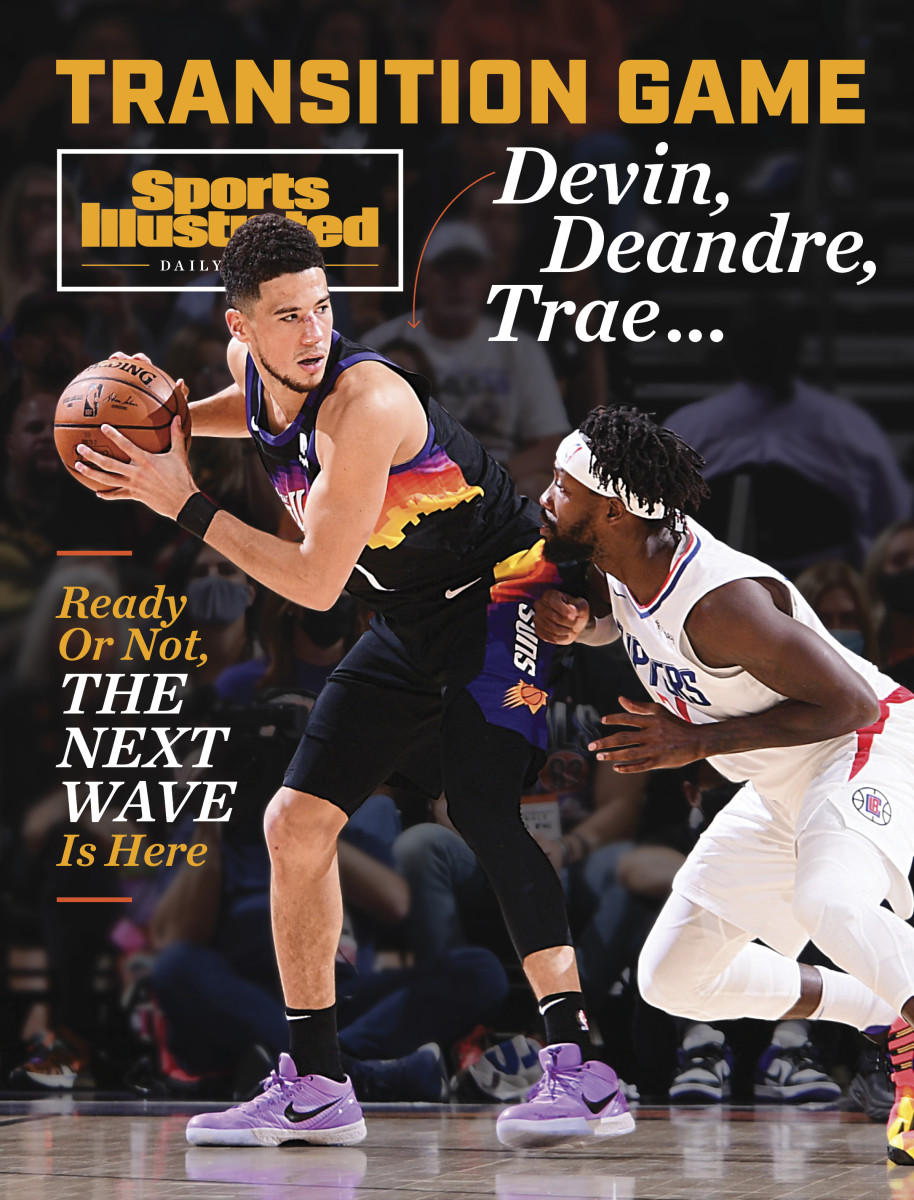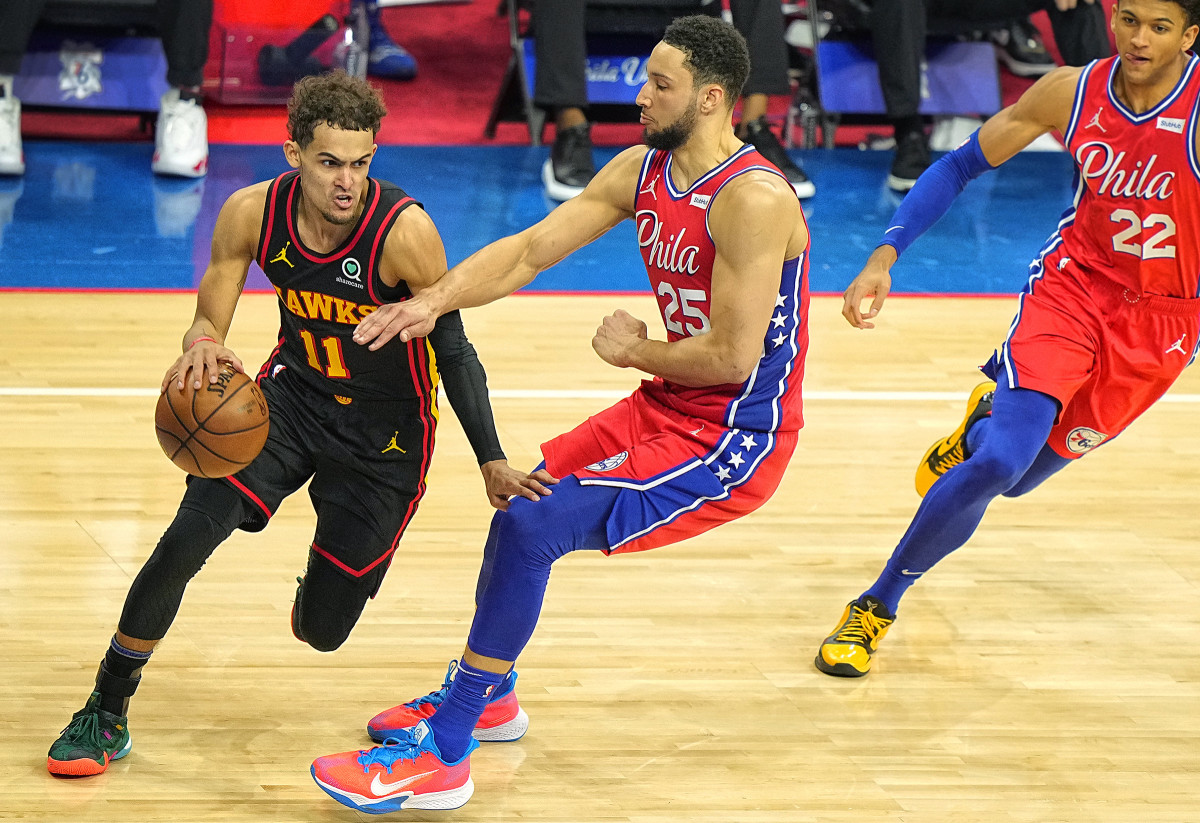The Future Is Now
As the NBA’s regular season was winding down just more than a month ago, a number of interesting developments seemed to be falling into place.
The struggling, defending-champion Lakers had gotten LeBron James and Anthony Davis back from injury just in time for what they hoped would be a long postseason run. League-scoring champ Stephen Curry and the Warriors, trying to stay afloat during the play-in race, were hoping to do the exact same thing. The Nets were trying to get their troubled star trio back on the court together. Even the Knicks, after an eight-year hiatus, were not only preparing to reach the playoffs but also hold home court advantage for the first round.

Admittedly, the scenario was shaping up to be one that many people—an abundance of fans in those massive markets and, obviously, league executives—figured to be thrilled with. (Especially when Los Angeles and Golden State squared off in a thrilling play-in game that came down to the final play.) Between those teams, there was no shortage of star power. And with that star power, the logic went, bigger television ratings would follow.
Of course, those best-laid plans were quickly undone. The Warriors, after falling at home to the Grizzlies in their second play-in game, never even made it to the playoffs. Davis couldn’t stay healthy, and the Suns mowed down the Lakers in six games in the first round. Brooklyn ended up being just as snakebitten in the postseason as it was during the regular season, and Kevin Durant and the Nets came up just shy in a Game 7 defeat against the Bucks in the Eastern Conference semis. But they lasted one round longer than New York, who got bounced by the Hawks in five brief first-round games. And beyond the eliminations, there’s been the ceaseless injury bug, biting star after star after star.
But for those who threw up their hands with frustration and yelled, To hell with the playoffs! it’s time to let you in on a secret: With or without those big-name players, this has been perhaps the most entertaining postseason in recent NBA history. And this new class of young stars, who for the first time is getting a chance to shine, is an enormous reason why.
Though it’s usually established veterans doing the heavy lifting this time of year, the youngsters have tipped the scale more than usual this postseason. Of the 10 players with the highest playoff scoring averages this year, five are 24 years old or younger (Luka Dončić, Donovan Mitchell, Jayson Tatum, Ja Morant and Trae Young). That’s the first time that’s happened since 1953, per Stats Perform.
You’ll notice that list doesn’t even include the 12th-leading scorer (28.3 points per game), 24-year-old Devin Booker, who will likely head into next season wearing a superstar tag. After a regular season in which future Hall of Famer Chris Paul generated MVP hype in his first year in Phoenix, Booker has helped lead the Suns on a nine-game playoff winning streak. That includes the first two games of the conference finals, which Phoenix played without Paul, who remains tied up in the league’s health and safety protocols tied to COVID-19.
After sending the Lakers home with an incredible 47-point showing on just 22 shots, Booker KO’d the Nuggets with 34 points and 11 rebounds in the closeout Game 4 against Denver. He opened the conference finals against the Clippers with a virtuoso performance, drilling seven midrange jumpers during a 40-point, 13-rebound, 11-assist game—the first triple double of his career. Even Tuesday, when he shot just 5-for-16, he provided an incredible boost on the biggest play of the game. Not long after his nose had been rearranged by a Pat Beverley headbutt, a stitched-up Booker set a hard screen during an inbounds to free up Deandre Ayton for a lob down the middle of the lane with less than one second left.
In a way, it was fitting that the last shot be drawn up for Ayton: Virtually every shot he’s taken in these playoffs has gone down. Heading into Thursday’s Game 3, he’d converted 72.6% of his tries this postseason. (For context, Rudy Gobert’s 66.5% for his playoff career is the highest rate in NBA history.) Even beyond the scoring—which he’s done from the face-up position, over both shoulders in the post, in pick-and-roll scenarios and on putbacks when he beats his man to the ball—he’s been impactful on defense. He was far from a lockdown defender in the Nuggets series but more than held his own with league MVP Nikola Jokić, which extinguished any chance Denver had of making it a competitive series.
The step forward the former No. 1 pick has taken—even in a year when he cut his shot attempts by a third—has meant everything for a club that’s on the cusp of reaching the Finals after an 11-year postseason drought.
Young, the Hawks star, saw his shots decrease this season, too, but for good reason: The talent around him was finally good enough to where it warranted the ball being out of his hands a bit more—both to hit open shooters and to allow other ballhandlers to run the show to leave more in his tank late in games.
Young has averaged 8.4 points per fourth quarter this postseason—tied for tops in the league—and opened his playoff career by hitting a game-winner at Madison Square Garden to take down the Knicks. On Sunday he waved the Sixers off their home floor after connecting on a couple of massive baskets late to win an upset Game 7, a contest he’d started by shooting a ghastly 2 for 19 from the field. He aggressively flipped the script Wednesday against Milwaukee to start the conference finals, igniting for 48 points and 11 assists, leading the Hawks to a surprising Game 1 road victory.

Before this playoff run, the short, swaggering Young had just begun to spark an interest and curiosity among casual Atlanta sports fans, who historically have been reluctant to latch onto the Hawks after going decades without a bankable superstar. But now Young is not only wildly popular back home; he’s also become a polarizing figure, both because of his interplay with a pair of massive opposing fan bases and his knack for foul-drawing, which drives wing defenders—and Young’s detractors—crazy. (This week, the league signaled it will likely alter its rules to outlaw the sorts of moves he utilizes to draw calls.)
On paper, the Hawks—the first team since the 1994–95 Pacers to reach the conference finals without an All-Star—might have seemed less interesting than the Sixers or the big-market Knicks. But so far, Atlanta has been fascinating and full of drama. The Hawks’ Game 7 with Philadelphia was one of the most-watched games of the entire postseason thus far. And it’s become clear that you can’t count them out of games. They came back from 18 down to beat the Sixers in Game 4, and then followed that up by racing back from 26 down to win Game 5. (Generally speaking, these playoffs have been wildly entertaining in that regard. There have already been more second-half double-digit comeback wins in this postseason—six—than any other in NBA history, according to Stats Perform.)
Of course that won’t stop some from complaining that there’s no LeBron present to drive a conversation. James attracts eyeballs, and generates feelings one way or the other. He was in the Finals nine times in 10 years, and the one year he missed, Curry and the Warriors were there. So this makes for a new reality.
But for those who claim things aren’t compelling enough from year to year because of the stranglehold a handful of big names and superstar teams have … isn’t this exactly the wide-open scenario you wanted?
No matter what, when the league crowns a new champion next month, the winner will be a club that hasn’t won it all in at least 50 years. The Bucks reigned victorious in 1971. The Hawks franchise owns no championships in Atlanta, and hasn’t won since ’58, when they were in St. Louis. The Suns have never won a championship. Neither have the Clippers, who, before this, had never made the conference finals.

For those who make the argument that this foursome isn’t compelling enough, or doesn’t move the needle, there’s a question worth raising: If not this, with a handful of young budding stars leading new markets to new heights, what is the eventual pivot away from James and Curry’s stardom supposed to look like?
The league’s ratings took a clear and obvious tumble immediately after Michael Jordan retired from the sport in 1993, and again in ’99. Interestingly, a pair of teams that had never won the championship before, the Rockets and Spurs, hoisted the Larry O’Brien Trophy afterward.
Both those clubs had superstars and won multiple titles, yet were never enormous ratings draws.
Then again, why should the average fan need to care about that? The games this postseason have been even more competitive than usual. Ratings, in some cases, have been tremendous. Last week’s Game 7 between the Bucks and Nets, for instance, went into overtime and was one of the most-watched playoff games of the last decade. The storylines are strong, and feature Giannis Antetokounmpo, a 26-year-old, two-time MVP who’s trying to build his own legacy. The Suns have Paul, a surefire Hall of Fame point guard trying to earn a ring, along with a pair of young guns who look ready for perennial stardom. Young could easily be a 10-time All-Star and find himself in MVP conversations. And even the Clippers, without Kawhi Leonard and down 2–0, have shown twice they can come back and win after being at a two-game disadvantage. They also have Paul George, who’s trying to redeem his past playoff struggles without his star teammate.
It’s too early to know how it will all play out. But one thing is clear: The new wave of NBA stars is here. That seismic splash was bound to happen soon, anyway, so there’s no reason it shouldn’t be now.
More NBA Coverage:
• Mock Draft: Projecting all 60 Picks
• The Ben Simmons Era in Philly Is Over, Right?
• The NBA Playoffs All-Money Team
